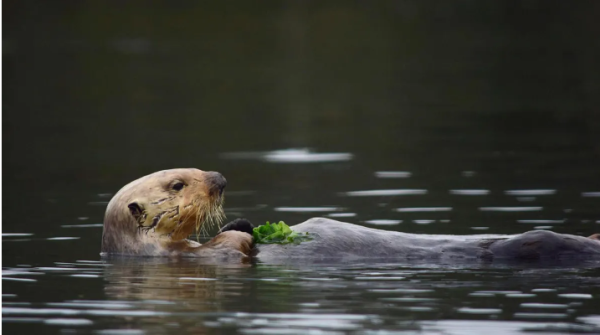As of late January of this year, the California sea otter, once on the brink of extinction due to the fur trade, has made a full-circle comeback, contributing to the restoration of its coastal environment. The second-largest wetland in Monterey Bay, Elkhorn Slough, is being restored due to the sea otters from a study published in the science journal Nature. This study reveals the significant role that sea otters played in preventing the erosion of an area of wetland in California, highlighting the vital role that apex predators play in the preservation of ecosystems.
Years of human activity like war, recreation, and manufacturing have left Elkhorn Slough in a condition of ruin, from pollution and sea level rise to the construction of new harbors. The well-balanced and working ecosystem was tested by the wetlands ruin, an outbreak of algae, and a significant increase in beach crabs. Through this chaos, the marine otters emerged during a time of ecological collapse. The sea otters proved to be a key factor in the re-establishment of the wetlands in Elkhorn Slough.
The sea otters went on a feeding binge, consuming up to 25% of their body weight in crustaceans per day, driven by their strong hunger for beach crabs. This huge amount of eating helped to restore the wetland plants while simultaneously controlling the number of crabs. “These voracious otters don’t just eat to survive; they play a crucial role in maintaining the delicate balance of coastal ecosystems,” stated Brent Hughes, a Sonoma State University marine ecologist. Sea otters had effectively slowed down erosion rates, lowering the risk of wetland collapse during extreme weather events by hunting down and eating crabs.
After decades of sea otter population decrease due to the fur trade, these marine mammals have made a comeback in California, signaling a success for conservation efforts. With the help of hunting bans and habitat restoration programs, sea otters, which were once as few as 2,000 in number, mostly in Alaska, have made a huge revival. Additionally, these otters also played a vital role in managing the number of sea urchins, which consume kelp, contributing to the huge renewal of kelp forests. Sea otters are said to be “amazing finders and eaters “ by Brian Silliman, a coastal ecologist from Duke University, who emphasizes these otters’ key role in the sea ecosystem’s health.

